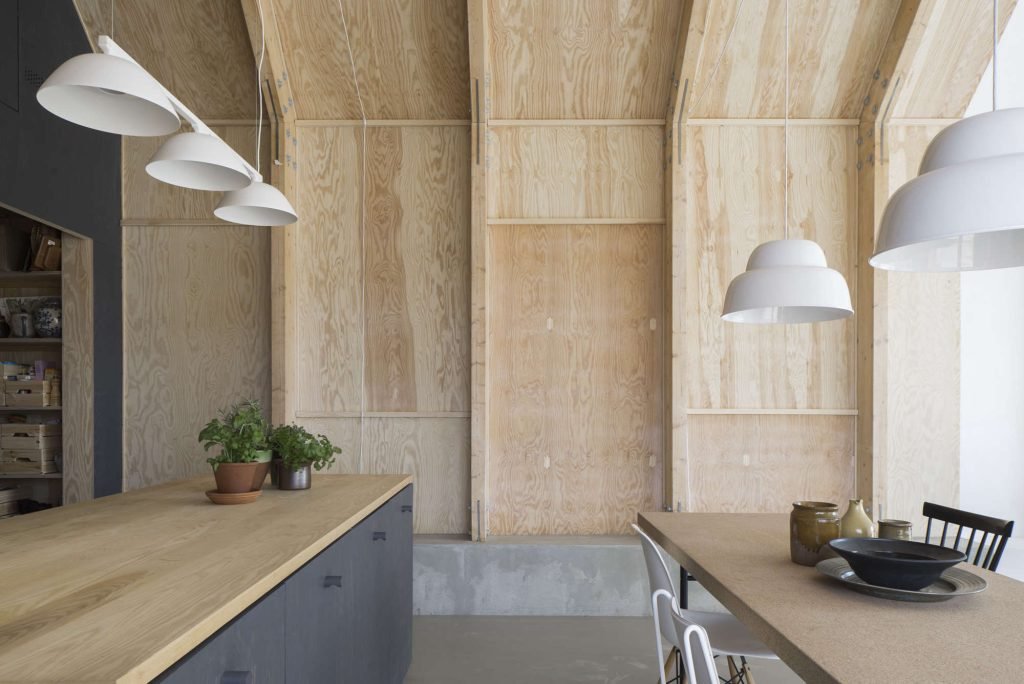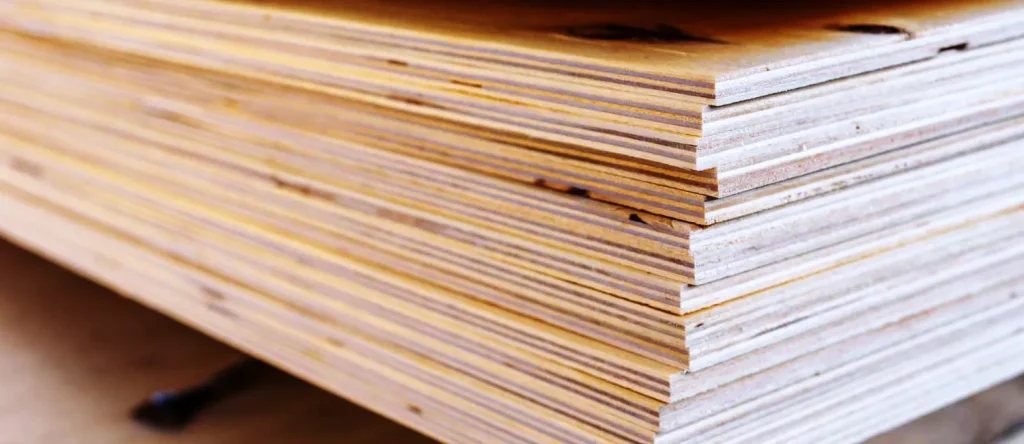Overview: The Plasterboard Conundrum
To be honest, plasterboard is somewhat of a standard. It’s not always the best option for every project, though, just because it’s widely used. When remodelling a garage, completing a basement or creating a utility room, you may wonder if plywood can be used in place of plasterboard. You’re not by yourself.
The benefits, drawbacks, and useful advice of using plywood rather than plasterboard in garages, bathrooms, basements, ceilings and other areas are covered in detail in this guide.
Why Take a Look at Plasterboard Alternatives?
Indeed, plasterboard is inexpensive and simple to work with. However, it is also dull, brittle, and not very resilient in places with a lot of moisture or traffic. For this reason, plywood is becoming a more durable and adaptable option for both professionals and do-it-yourselfers.
Why Is Plywood Different and What Is It?
Plywood is a type of manufactured wood panel composed of thin wood veneer layers, or plies. To increase strength, the grain of each of these layers is rotated up to 90 degrees before being glued together.
Plywood withstands impact and moisture better than plasterboard, which literally crumbles. It is more robust, has a better ability to hold screws, and remains intact in damp conditions.
Plasterboard vs. Plywood: Benefits and Drawbacks
Let’s dissect it:
Sturdiness and Power
Compared to plasterboard, plywood is substantially stronger. Without anchors, you can hang a TV, tools, or shelves straight into it. For garages and utility rooms, that is revolutionary.
Installation Simplicity
Unlike plasterboard, you don’t have to mud the joints or tape seams. Simply cut, screw into position, and you’re ready to go. If you want, you can paint and sand.
Adaptability and Beauty

For a more rustic look, plywood can be left unfinished or painted or stained. For a more upscale appearance, you can even go fancy with marine-grade or hardwood-faced panels.
Comparing Prices
Generally speaking, plywood costs more per sheet than plasterboard. However, the gap may narrow if you include labour and accessories (such as joint compound and corner beads for plasterboard).
Code Compliance and Fire Resistance
This is a crucial point: plywood burns more easily than plasterboard. This implies that in some places, particularly the walls dividing living areas from garages, it might not adhere to building codes.
Before switching, make sure to check with your local building authority.
Where Plywood Can Be Used in Place of Plasterboard
You have choices, but each has factors to take into account.
Absolutely, using plywood in the garage rather than plasterboard!
In fact, one of the most common substitutes for plasterboard in garage areas is plywood. It is sturdy enough to withstand bumps and dings and makes storing and hanging tools simple. Just make sure it complies with local fire safety regulations, particularly for walls that are next to residential areas.
Can I Install Plywood Behind Cabinets in Place of Plasterboard?
Yes, and it’s frequently advised. For kitchens or laundry rooms, plywood offers a more robust surface on which cabinets can be firmly attached. The plywood may not even be visible if the cabinets are floor to ceiling.
Can I Install Plywood in My Bathroom Instead of Plasterboard?
It’s feasible, but difficult. High levels of moisture are found in bathrooms. If plywood is your only option, go for moisture-resistant varieties like pressure-treated or marine-grade plywood. After that, properly seal it. Nevertheless, a lot of experts still advise using cement board or moisture-resistant plasterboard in damp areas.
Is It Possible to Use Plywood in a Basement Instead of Plasterboard?
Yes, particularly in unfinished workshops or basements. Compared to plasterboard, plywood is more resilient to rough conditions and can aid in wall bracing. Just be aware of moisture problems; when necessary, use vapour barriers and treated plywood.
Is It Possible to Use Plywood for Ceilings in Place of Plasterboard?
Of course! In contemporary, rustic, and even minimalist design, plywood ceilings are popular. Additionally, they are less likely than plasterboard to sag and crack, particularly over large areas.
Using Plywood in Place of Plasterboard
Although the terms are frequently used interchangeably, they are not the same. The British cousin of American plasterboard is called plasterboard.
Why Opt for Plywood Rather Than Plasterboard?
Why would you use plywood rather than plasterboard or plasterboard, whether you’re in the UK or somewhere else?
This is the reason:
- Increased resistance to impacts
- Improved assistance for mounted objects
- No sloppy joint finishing
- gives certain wall assemblies more structural integrity.
When Plywood Should Not Be Used in Place of Plasterboard
Sometimes plasterboard is preferable:
- Where a fire rating is crucial
- When your finances are extremely limited
- If certain wall types (such as Type X plasterboard) are mandated by building codes,
Advice for Using Plywood for Wall Construction
Select the appropriate grade:
- Indoors, smooth, sanded plywood (such as AC grade) performs best.
- Drill holes in advance to prevent splintering.
- Instead of using nails, use wood screws.
- Paint or seal to keep moisture out.
Painting, sealing, and styling are the final touches.
Do you want to add a polished appearance to your plywood walls?
- For a smoother finish, use wood filler on seams.
- Before painting or staining, lightly sand.
- For a unique decorative touch, try tongue-and-groove panels.
Final thought
Can plywood be used in place of plasterboard, then? Yes, quite frequently! It’s robust, useful, and a fantastic choice for utility rooms, garages, basements, and behind cabinets. Just use common sense when it comes to moisture protection and code compliance.
Plywood is an excellent choice where strength, function and durability are the most important factors, even though plasterboard still has a place, particularly in living areas and fire-rated zones.
FAQs
Why use plywood instead of plasterboard?
Because plywood offers greater strength, impact resistance, and load-bearing capacity compared to plasterboard (also known as drywall). It’s ideal in areas where you want to mount shelves, cabinets, or tools directly into the wall without worrying about anchors pulling out. Plywood is also more durable in high-traffic or utility spaces like garages and workshops.
Is it okay to use plywood instead of drywall?
Yes, in many situations it is. You can use plywood instead of drywall in spaces like garages, behind cabinets, or basements—anywhere that needs added durability. However, for areas that require fire-rated materials (like walls between garages and living areas), drywall may be required by building codes. Always check your local code requirements before making the switch.
What is an alternative to plasterboard?
There are several good alternatives, depending on your needs. Plywood is a top choice for strength and durability. Other options include cement board (great for wet areas), wood paneling for aesthetic purposes, or oriented strand board (OSB) for structural backing. Each alternative serves different needs, so choose based on the space and function.
Can I use wood instead of plasterboard?
You can, especially if you’re aiming for strength, easy mounting, or a rustic aesthetic. Wood panels like plywood or shiplap offer excellent durability and can be sealed or painted to match your style. However, be aware of fire safety concerns and moisture sensitivity—some environments may require specific materials to meet building standards.

